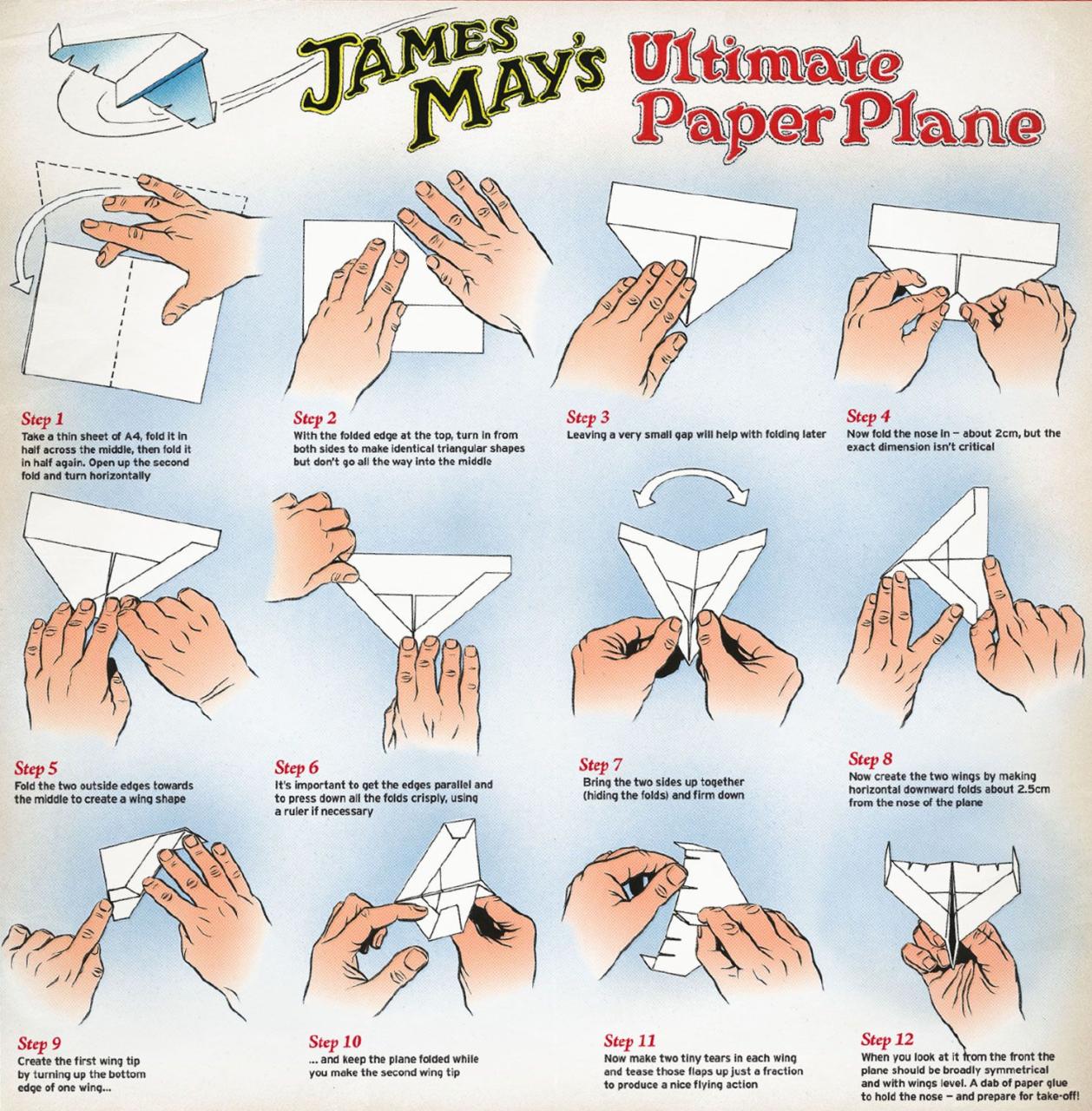In the realm of childhood ingenuity and the boundless imagination of a child’s heart, there lies a timeless art—the art of crafting a paper airplane. It is a pursuit that transcends generations, fostering a blend of creativity, engineering, and the thrill of watching a dream take flight.
Whether you’re a seasoned paper airplane enthusiast or a novice yearning to unfold the secrets behind these paper wonders, this comprehensive guide is here to empower you with the knowledge and techniques needed to master this cherished pastime.
Embark on this adventure, and you’ll discover the joy of creating paper airplanes that soar through the air with grace and precision, bringing smiles to faces and igniting the spark of imagination in young and old alike.
How to Make a Paper Airplane

Making a paper airplane is a classic childhood pastime that can be enjoyed by people of all ages. It’s a simple and fun activity that can be done with just a few basic materials. With a little practice, you can learn to make paper airplanes that fly straight, far, and even perform stunts.
In this guide, we’ll provide you with step-by-step instructions on how to make a paper airplane. We’ll also include some tips and tricks to help you make the best paper airplanes possible.
Materials You’ll Need
- A piece of paper
- A ruler or measuring tape
- A pencil or pen
- A pair of scissors
Step-by-Step Instructions
Step 1: Fold the paper in half lengthwise.
Start by folding the paper in half lengthwise. This will create a crease down the middle of the paper.
Step 2: Unfold the paper and fold the top corners down to the crease.
Next, unfold the paper and fold the top corners down to the crease you created in Step 1. These folds will form the wings of the airplane.
Step 3: Fold the bottom edge of the paper up to meet the top edge.
Now, fold the bottom edge of the paper up to meet the top edge. This fold will form the body of the airplane.
Step 4: Fold the wings down.
Finally, fold the wings down along the creases you created in Step 2. Your paper airplane is now complete!
Tips for Making the Best Paper Airplanes
- Use a thin, lightweight piece of paper.
- Make sure your folds are neat and accurate.
- Experiment with different wing designs to find what works best for you.
- Practice, practice, practice!
Troubleshooting
If your paper airplane isn’t flying well, there are a few things you can try to troubleshoot:
- Make sure your folds are neat and accurate. Even a small error in a fold can affect the way the airplane flies.
- Experiment with different wing designs. There are many different wing designs that you can try.
Some designs are better for different types of flying, such as gliding or performing stunts.
- Practice, practice, practice! The more you practice making paper airplanes, the better you’ll get at it. With a little practice, you’ll be able to make paper airplanes that fly straight, far, and even perform stunts.
With a little practice, you’ll be able to make paper airplanes that fly like a dream. So get started today and see how far you can make your paper airplanes fly!
Design Considerations for Paper Airplanes
Wing Shape and Size
The shape and size of the wings play a significant role in the flight characteristics of a paper airplane.
Wider wings provide more lift, making the airplane fly longer distances. However, they create more drag, reducing the speed.
Narrow wings allow for higher speeds but reduced stability and maneuverability.
Experiment with different wing shapes to find the optimal balance between lift and drag for your desired flight characteristics.
Materials and Paper Selection
Paper Thickness and Density
The thickness and density of the paper used will affect the flight performance.
Thicker and heavier paper creates more stability, but it also increases drag.
Thinner and lighter paper is more maneuverable and flies faster, but it is less durable.
Select the paper thickness based on your desired flight characteristics and the intended use of the airplane.
Customization and Variations
Tail Design and Rudders
Adding a tail to the airplane provides stability and control during flight.
A vertical tail helps prevent the airplane from spinning and improves yaw stability.
Rudders on the tail can be used to adjust the direction of the airplane while in flight.
Experiment with different tail and rudder designs to enhance the stability and maneuverability of your airplanes.
Body Swoop and Dihedral
Modifying the body of the airplane can also impact its flight characteristics.
A curved or “swooped” body reduces drag and improves speed.
Dihedral, or upward angling of the wings, provides stability and prevents the airplane from rolling over to one side.
Adjust these design elements to customize the performance and flight characteristics of your paper airplanes.
Flight Techniques and Tricks
Launch Angle and Release Point
The launch angle and release point of the airplane can significantly affect its flight distance and trajectory.
A shallow launch angle and a release point at eye level provide maximum distance.
Experiment with different launch angles and release points to optimize the flight performance of your airplanes.
Wind Conditions and Environment
Wind conditions play a crucial role in the flight of paper airplanes.
A gentle breeze can provide lift and assist the airplane’s flight, while strong winds can make it difficult to control and cause it to crash.
Choose an open and windless environment for optimal flight performance.
Conclusion
With the knowledge and techniques provided in this guide, you can embark on a thrilling adventure of paper airplane design and flight mastery.
Experiment with different design variations, materials, and flight techniques to create paper airplanes that soar, glide, and perform stunts.
Remember, the joy of making and flying paper airplanes lies in the creative process, the thrill of watching your creations take flight, and the memories created along the way.